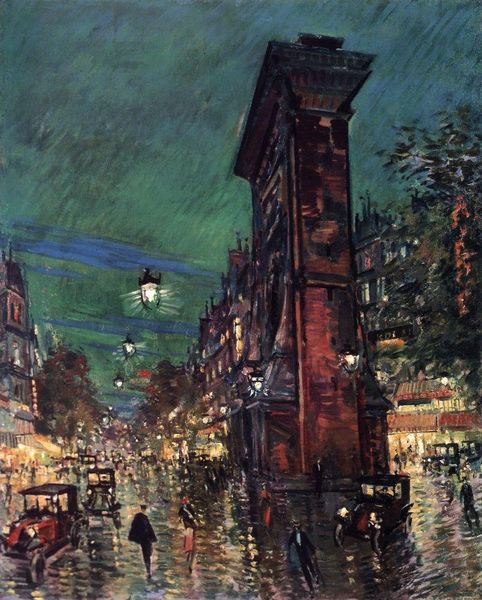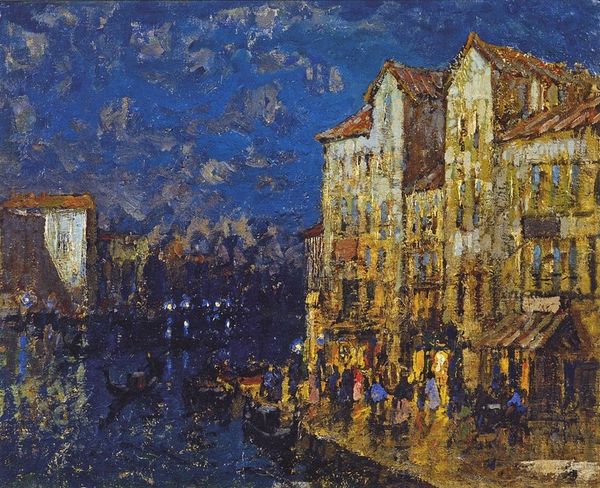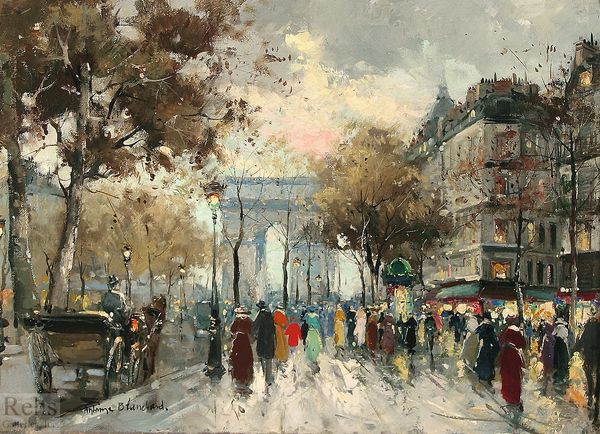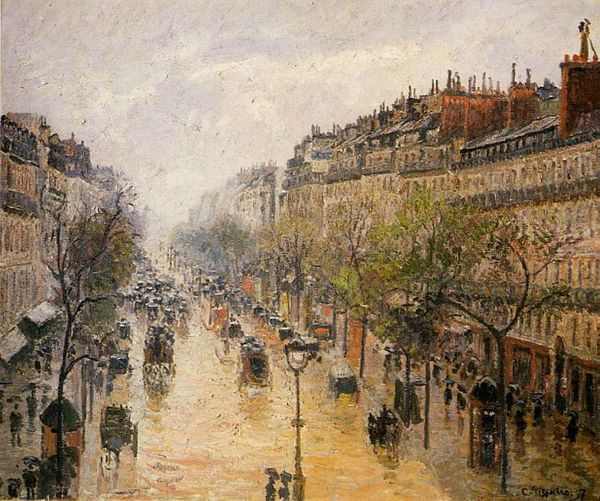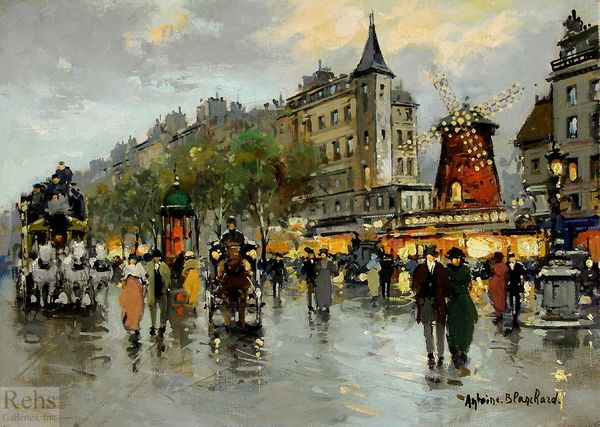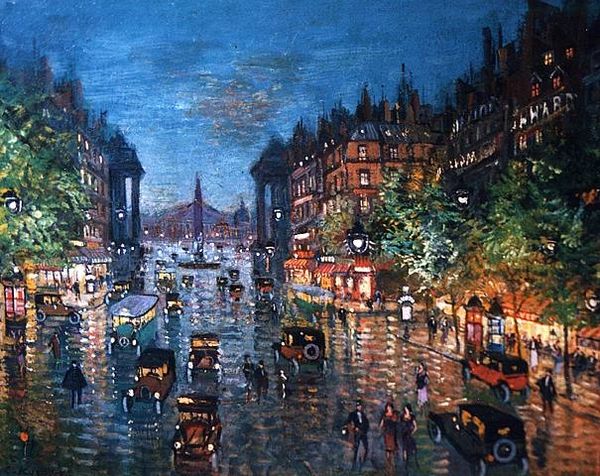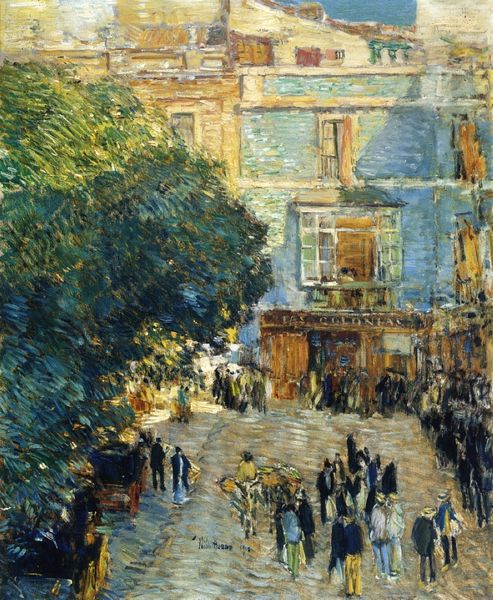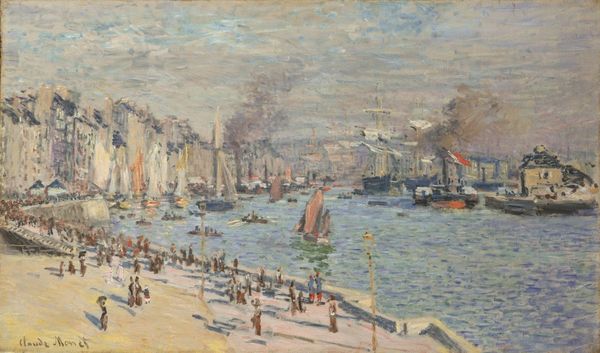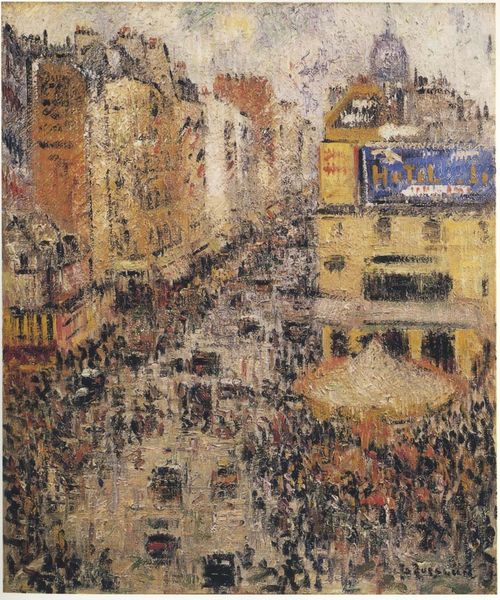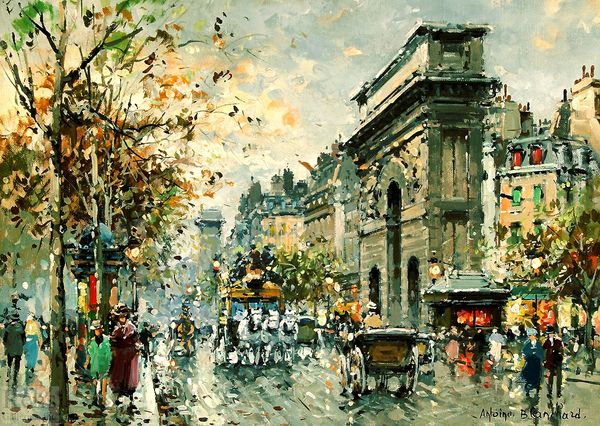
Copyright: Public domain
Editor: Here we have Konstantin Korovin's "Paris," painted in 1933 using oil paints. It evokes a sense of nocturnal hustle and bustle reflected in rain-slicked streets. The city lights create such dynamic reflections... What do you see when you look at this painting? Curator: What strikes me is the calculated use of impasto. Notice how Korovin has applied thick layers of paint to capture the ephemeral qualities of light and reflection. The composition, while seemingly chaotic, adheres to a structured arrangement. The verticality of the trees and buildings juxtaposed against the horizontal street creates a compelling visual tension. Editor: So you are saying the seeming randomness is carefully constructed? Can you elaborate? Curator: Indeed. Observe how the brushstrokes, while appearing spontaneous, contribute to a carefully considered structure. Note the deployment of contrasting colours—warm ambers and golds of the streetlights against the cool blues and greys of the Parisian sky, not unlike the way that Monet used to orchestrate a visual symphony of light. Editor: The colours do dance across the canvas. It’s like he’s captured a moment of shimmering transience. I hadn't noticed how carefully structured the composition is before. Curator: Consider too the materiality of the paint itself. The texture, the viscosity – it all serves to enhance the tactile and visual experience. What initially appears to be a simple landscape reveals, upon closer inspection, a complex interplay of form, color, and texture. Editor: It’s amazing how much deeper our understanding can get when focusing on those elements. I’ll definitely pay more attention to brushstrokes and texture in other works now!
Comments
No comments
Be the first to comment and join the conversation on the ultimate creative platform.

